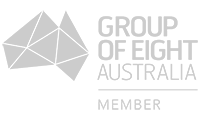SSO Update
Published in the RSAA Lunations
Vol1 Issue21 1–31 October 2021
The bird’s nest
The mass of wires on the 2dF interface board, colloquially known as the bird’s nest, has drawn a bit of attention in the past. It’s untidy mass of wires has been very confusing and intimidating for anybody who has worked on it. It has earned a reputation for also being very sensitive to disturbance. Attempts to carefully analyse the situation and plan changes have always been fraught with the risk of causing faults that would be very hard to find. With the Hector installation on the 2dF top end occurring in November, it was decided to tackle the problem head on.
Work began with 2dF off the telescope. First, all cable ties were cut so that the cables could hang free. Cables were traced, unplugged, re-routed and plugged back in one by one and often multiple times over the period of a few days, until all the redundant cables were removed and working cables untangled.
While not all of the cables could be completely untangled during the period before returning 2df back to service, most cables were left in a state where they could be neatly bundled back together for future work.
The results from this work really speak for themselves (see the attached before and after photos). The bird’s nest which was once thought to be a vulnerable point of failure for 2DF is now no more. The removal of redundant cabling presents a cleaner and more organised structure to work on and fault finding is now easier.
As part of the 2dF refurbishment project, 2dF will be upgraded to run on Copley Drives and much of the older PMAC equipment will be removed, allowing for another clean-up of the remaining bundled cables and the removal of older bulky interface connections.
A special thanks to Sindhura Nyayapathi, Daniel Bonello, Ethan Thirkell, John Goodyear and Chris McCowage for their assistance with the project and for testing 2dF once the bird’s nest was removed.
Ashley Anderson
2.3-metre mirror recoating
The team at SSO have been busy recoating telescope mirrors this year. The first mirror to be recoated was the 2-metre mirror of the Faulkes Telescope, soon to be followed by the 3.9-metre mirror of the AAT. On September 20th, the 2.3-metre mirror of the ANU ATT (better known as the 2.3-metre telescope) began. Recoating the mirror is a big job, involving removal from the telescope, transportation to the AAT, removal of the old coating, preparation of the mirror with special chemical compounds, the re-coating itself, transportation back to the 2.3m, re-assembly, recollimation, and the creation of a new pointing model.
The mirror was taken out on the Monday morning, cleaned and recoated on the Tuesday, then installed, collimated, and tested on the Wednesday, ready for astronomers to use on Wednesday night. This was a very quick turn-around and a credit to the re-coating team, who are shown in the photo in front of a freshly coated mirror. From left to right, Glenn Murphy, Ethan Thirkell, Ian Adams. Zac Smith, and Zoe Holcombe.
Welcome Murray Riding and Harry Abbot
It is a real pleasure to welcome Bruce (Murray) Riding and Harrison (Harry) Abbot to the Observatory. Both Murray and Harry are known to many of us. Murray spent a couple of years on the 2nd floor of the AAT working on his Masters, the results of which will be used to process data taken with the new Hector instrument, and Harry is a frequent user of the 2.3-metre telescope.
Murray will take on the role of Operations Technician which involves night assisting, some programming, and work that was previously done by support astronomers that the old AAO used to employ before the transition.
Harry will be employed part time as a night assistant. Harry is currently doing a PhD in astronomy and he will continue doing his PhD part time while doing night assisting.
The addition of Harry and Murray to the team gives us a pool of seven night assistants, which is a big improvement on the four that we had during the middle of the year.
We look forward to working with Harry and Murray over the coming years.
Stay safe and stay well.
The team at SSO






